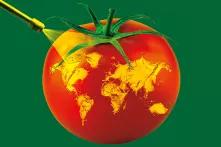
385 million people fall ill every year from pesticide poisoning. The United Nations intend to improve the worldwide handling of pesticides to prevent harm, but there is little effective legal regulation.

People can be unintentionally exposed to pesticides in various situations: on the field, in the forest, through food or drinking water. The clinical diagnosis of pesticide poisoning is made when typical symptoms develop after exposure. Some health effects may occur right away, while other symptoms may occur several hours after exposure. Short-term adverse health effects are called acute effects, including stinging eyes or rashes. The victim may feel tired and listless and suffer from headaches and aching limbs. The digestive tract is also frequently affected – the consequences are nausea, vomiting or diarrhoea. In serious cases of poisoning, the victim’s organs can fail: the heart, lungs or kidneys stop functioning. The total number of fatalities around the world from unintended pesticide poisonings are estimated at some 11,000 per year.
Farmers are at a higher risk of getting exposed to pesticides, but the substances can also pose risks to people outside the agricultural sector as pesticides are mobile and difficult to control. They often contaminate the environment and end up in our food.
The lack or misregarding of safety precautions can result in serious injuries or fatalities as the following two examples show: In 2013, twenty-three school students in Bihar, India, died within minutes of eating a meal of rice and potato curry that was part of a lunch program against malnutrition. The forensic investigation found that the meal had been prepared with cooking oil that contained the pesticide monocrotophos. In the same year, an airplane sprayed an insecticide over a rural school in the Rio Verde for a full 20 minutes. Children and their teachers were eating their lunches under the open sky when the toxic chemicals were sprayed on them. Dozens of children and adults were hospitalized. The school – located among vast maize and soy plantations – was doused in the pesticide Engeo Pleno, produced by the seed and chemical company Syngenta.
Many of those affected by poisoning suffer from long-term effects: There is a substantial body of evidence on the relationship between exposure to pesticides and elevated rate of chronic diseases such as Parkinson’s or childhood leukaemia. Pesticides have also been linked to an increased risk of liver and breast cancer, Type 2 diabetes and asthma, allergies, obesity and endocrine disorders.
Birth defects, preterm births and growth disorders can also be traced back to contact with pesticides. In recent years, a widely publicized debate has centered on glyphosate. Several people who developed cancer after being exposed to the herbicide have sued its manufacturer Bayer for damages, who has lost various lawsuits already. About 96,000 plaintiffs reached settlements estimated at 11.6 billion euros; around 30,000 of these lawsuits are still ongoing.
In March 2015, the International Agency for Research on Cancer (IARC) – an intergovernmental agency that forms part of the World Health Organization (WHO) of the United Nations – classified glyphosate as “probably carcinogenic to humans”. A 2019 University of Washington scientific meta-study found that the overall meta-relative risk of non-Hodgkin lymphoma in individuals that were exposed to glyphosate-based herbicides increased by 41 percent.
Several studies show that pesticide poisonings have been rising sharply for years – today about 385 million cases of acute poisonings occur each year. In 1990, a WHO task force estimated that about one million unintentional pesticide poisonings with severe manifestations occur annually, leading to approximately 20,000 deaths. Because many states do not have central reporting offices, it can be assumed that the actual number could be significantly higher as many cases remain unreported: Scientists point out that the total number of occupational poisonings in 1990 was even twenty-five million. One reason for the increase to 385 million poisonings today is probably the intensified pesticide use all over the globe: the worldwide tonnage increased by almost 81 percent between 1990 and 2017. This includes a 484 percent increase in South America and a 97 percent increase in Asia.
Most victims live in the Global South, where environmental, health, and safety regulations are often the weakest. The use of Highly Hazardous Pesticides (HHPs) is also a reason for the high poisoning rate. 60 percent of deaths related to pesticide poisonings occur in India.
In order to reduce the high number of pesticide poisonings, the WHO and the Food and Agriculture Organization (FAO) – a specialized agency of the United Nations that leads international efforts to defeat hunger and improve nutrition and food security – have developed a voluntary framework and standards for pesticide management. Among other things, the code of conduct recommends avoiding pesticides that require personal protective equipment too uncomfortable or expensive to use. The guideline recommends also the use of agroecological alternatives and a ban on Highly Hazardous Pesticides (HHPs). However, these recommendations have hardly been implemented so far, they are still non-binding and without legal obligation.
